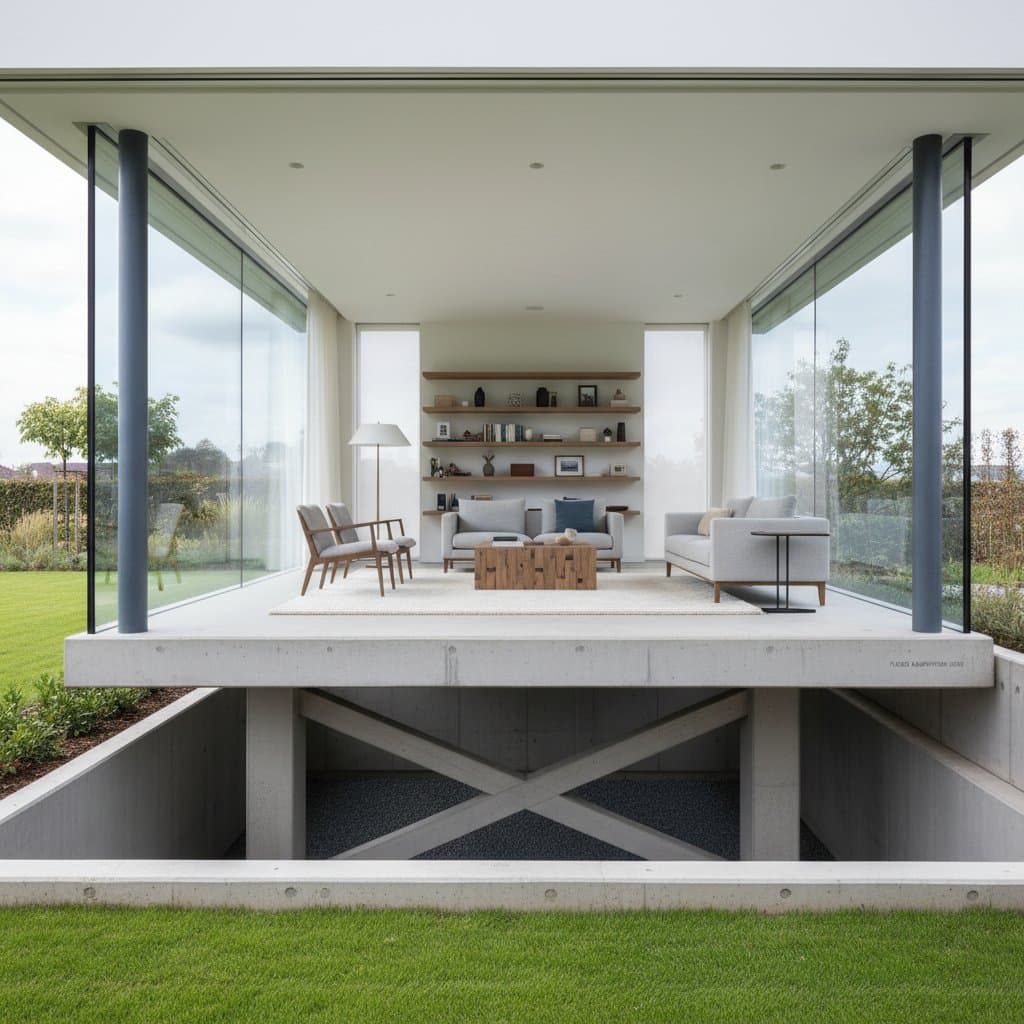Multigenerational Home Designs and 2025 Conversion Costs
Families increasingly opt for shared living to support aging relatives or adult children. These arrangements demand homes that balance independence with connection. Homeowners must navigate design choices, budget constraints, and regulatory hurdles to achieve functional, enduring spaces.
Defining Multigenerational Home Design
Multigenerational homes feature distinct living areas alongside communal zones. Common configurations include attached suites with private entrances and compact kitchens, accessory dwelling units as backyard cottages or garage-top apartments, and interior adaptations of basements or attics into self-sufficient quarters.
Prioritize accessibility through features such as zero-step thresholds, 36-inch door widths, and dedicated bathrooms. Include shared elements like central kitchens or patios to encourage interaction. Consult local architects early to align designs with family dynamics and site limitations.
Evaluating the Scope of Conversion Work
Determine project scale to avoid surprises. Interior reconfigurations suit modest needs, while attached additions or detached ADUs demand greater investment and oversight.
Each option involves unique zoning rules and utility demands. Assess electrical capacity for added appliances, plumbing for extra fixtures, and heating systems for expanded coverage. Engage a structural engineer to identify upgrades and prevent mid-project disruptions.
Cost Structure Analysis
Break down expenses to build a reliable budget. Factor in regional variations, such as higher labor in urban areas or material fluctuations due to supply chains.
| Cost Component | Typical Range | Description |
|---|---|---|
| Design and Permitting | $8,000 to $25,000 | Includes blueprints, environmental assessments, and municipal reviews |
| Construction Labor | $90 to $250 per sq ft | Encompasses framing, drywall, painting, and skilled installations |
| Utility Upgrades | $5,000 to $20,000 | Covers panel expansions, pipe rerouting, and septic modifications |
| Fixtures and Finishes | $10,000 to $40,000 | Features cabinetry, resilient flooring, energy-efficient lighting, and basics |
| Contingency Fund | 10% to 15% of total | Addresses surprises like soil issues or revised code requirements |
Account for indirect expenses, including temporary relocation during work or legal fees for disputes.
Understanding Financing Options
Select funding based on project timeline and risk tolerance. Home equity loans offer fixed rates for predictable outlays, ideal for defined scopes.
HELOCs provide draw-as-needed flexibility but expose borrowers to rate hikes. Cash-out refinancing consolidates debt over longer terms, while construction loans disburse incrementally upon verified progress. Review lender criteria, including credit scores above 680 and debt-to-income ratios under 43 percent.
If renting the unit, project income to offset payments. Seek advice from mortgage specialists on tax deductions for home improvements and updated policy riders.
Process Walkthrough from Planning to Completion
Start with a needs assessment involving all household members. Architects then develop schematics highlighting load-bearing walls and utility paths.
Submit detailed plans to building departments, anticipating 4-8 weeks for approval. Construction follows in phases: foundation work, rough-ins for systems, and interior detailing.
Schedule inspections at key stages to confirm compliance. Build in buffers for weather delays or supplier shortages, targeting 3-6 months for most projects.
Coverage Limitations in Service Contracts
Scrutinize agreements for gaps in protection. Many exclude damages from hidden defects like termite damage or corroded pipes.
Warranties might limit labor coverage to one year, with materials guaranteed separately. Change orders often add 20-30 percent to costs if conditions change.
Demand clauses for third-party mediation and retainage, holding 10 percent of payments until final walkthrough. Document all verbal agreements in writing to safeguard interests.
Financial Implications Beyond Construction
Anticipate ongoing expenses that accumulate. Insurance premiums may increase by 15-25 percent for added structures, necessitating separate policies.
Utilities rise with duplicate systems; counter this by selecting LED fixtures and low-flow plumbing. Budget for dual maintenance, such as biannual HVAC servicing at $200-400 per unit.
Project five-year totals, including a 5 percent annual escalation for repairs, to gauge viability against family benefits.
Evaluating Value and Return on Investment
Conversions can add 10-20 percent to home equity in supportive markets. Detached ADUs often yield stronger appraisals due to versatility for rentals or offices.
Compare build costs against valuation gains using local sales data. Factor in non-monetary returns, like reduced commuting for caregivers or pooled household savings.
Track annual metrics: net income from use, offset by upkeep. This evaluation reveals if the project supports resale or long-term retention.
Risk Mitigation and Consumer Protection
Vet professionals through state licensing boards and review portfolios of similar conversions. Secure certificates of insurance covering general liability up to $1 million.
Structure payments progressively: 10 percent deposit, 30 percent at framing, balance at occupancy. Maintain a project journal with photos and correspondence.
Familiarize with local mediation services or attorney general resources for unresolved issues. These steps minimize exposure to liens or substandard outcomes.
Building for Flexibility and Longevity
Incorporate adaptable elements like multi-use rooms with sliding doors or adjustable cabinet heights. Universal design principles ensure broad usability across ages.
Integrate scalable tech, such as Wi-Fi thermostats or voice-activated locks, compatible with future standards. Plan for phased expansions to accommodate evolving family structures.
Steps to a Successful Conversion
Approach the project methodically, starting with a detailed family vision and professional consultations. Secure financing aligned with realistic timelines and secure binding contracts.
Monitor progress closely and adjust for unforeseen challenges. The result yields a resilient home that nurtures generations, cuts costs through shared resources, and elevates overall well-being.



